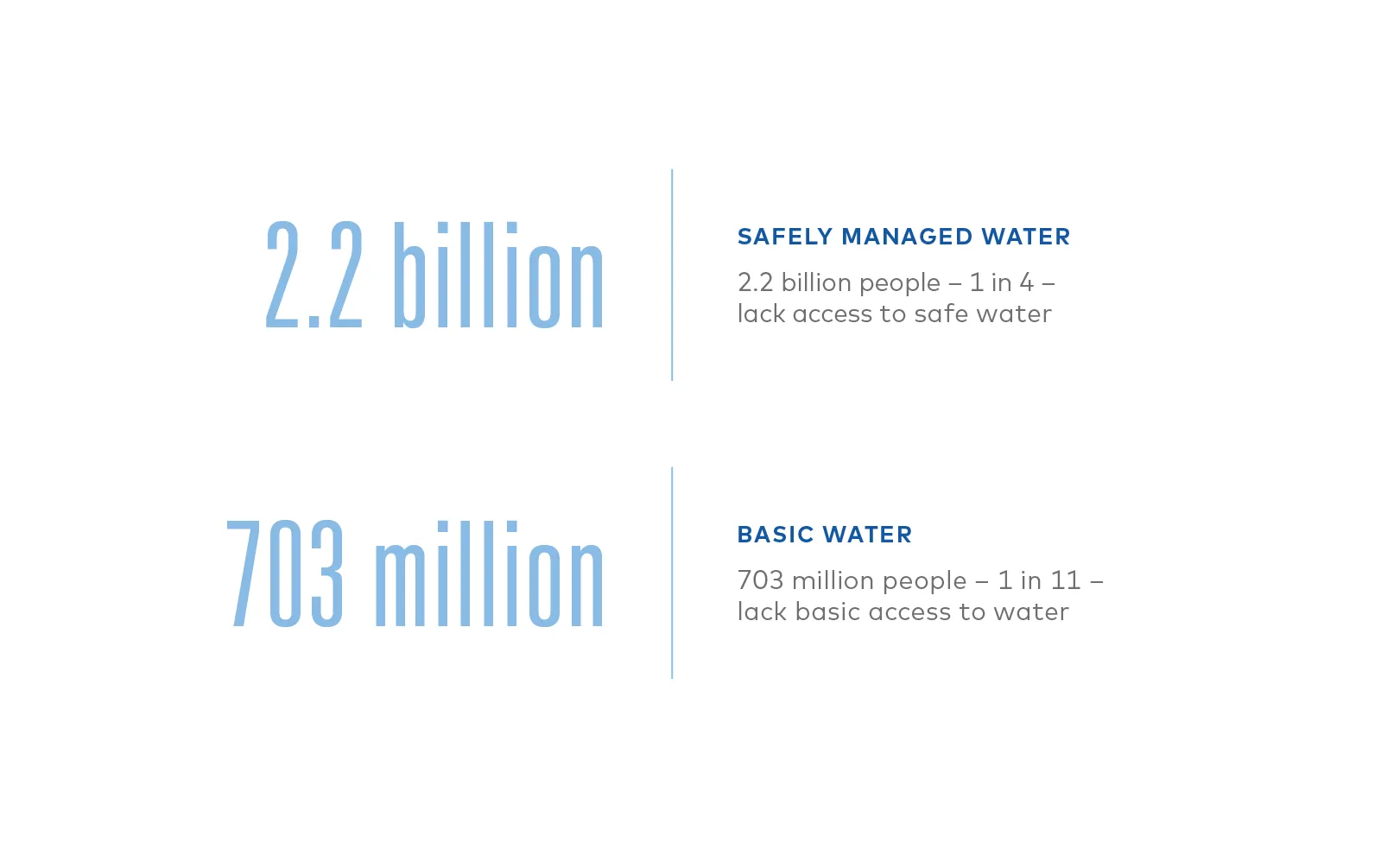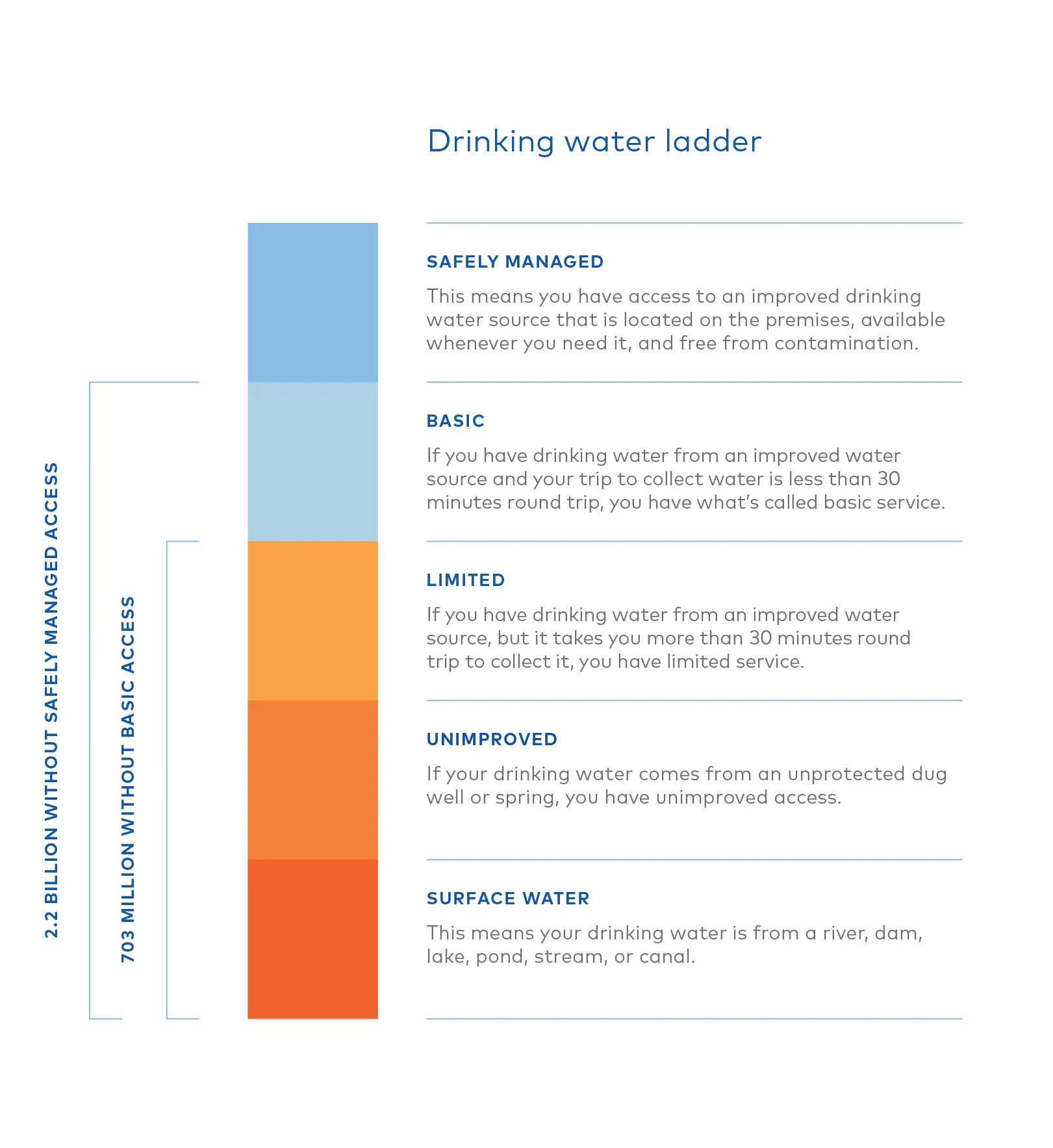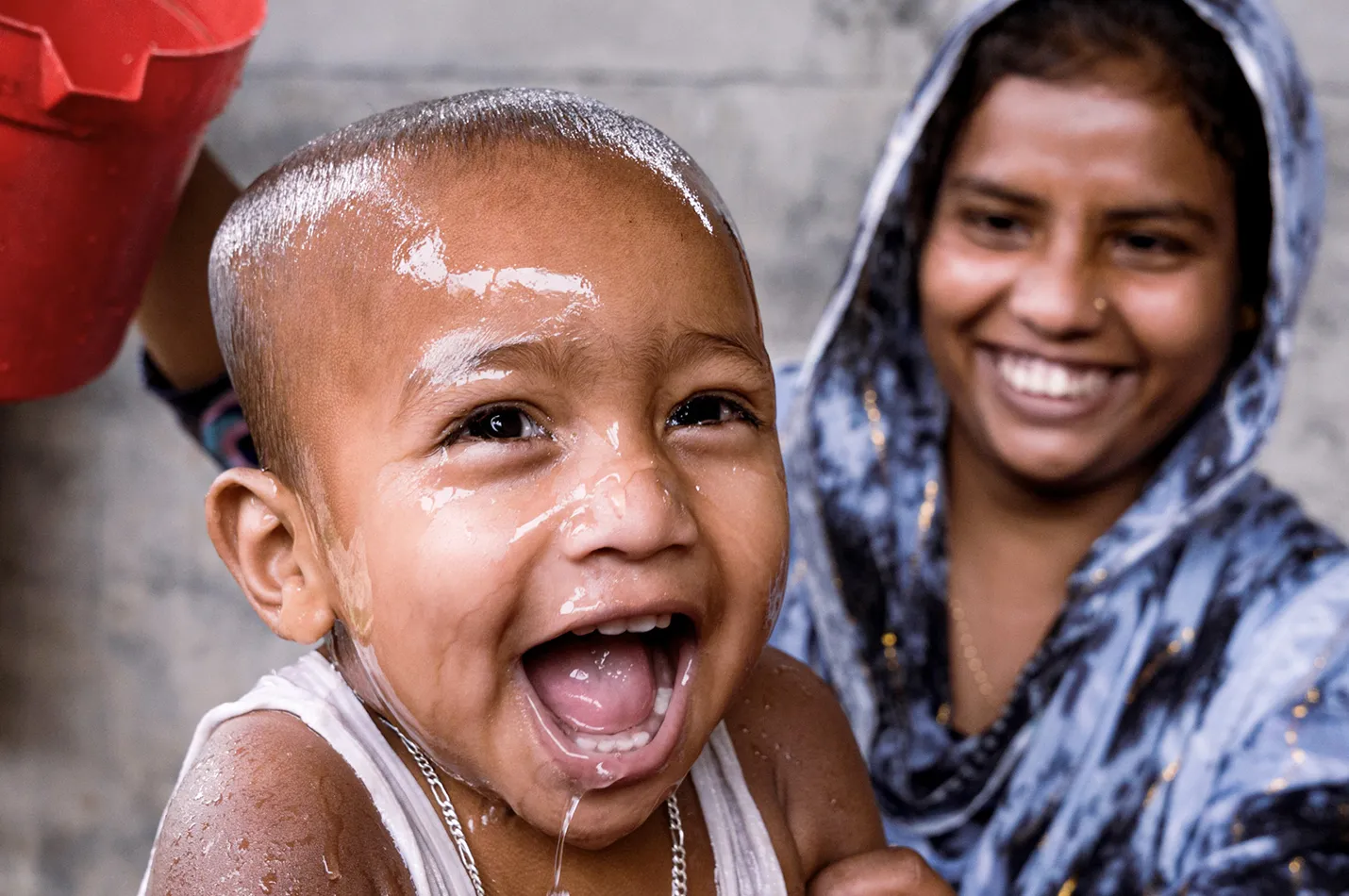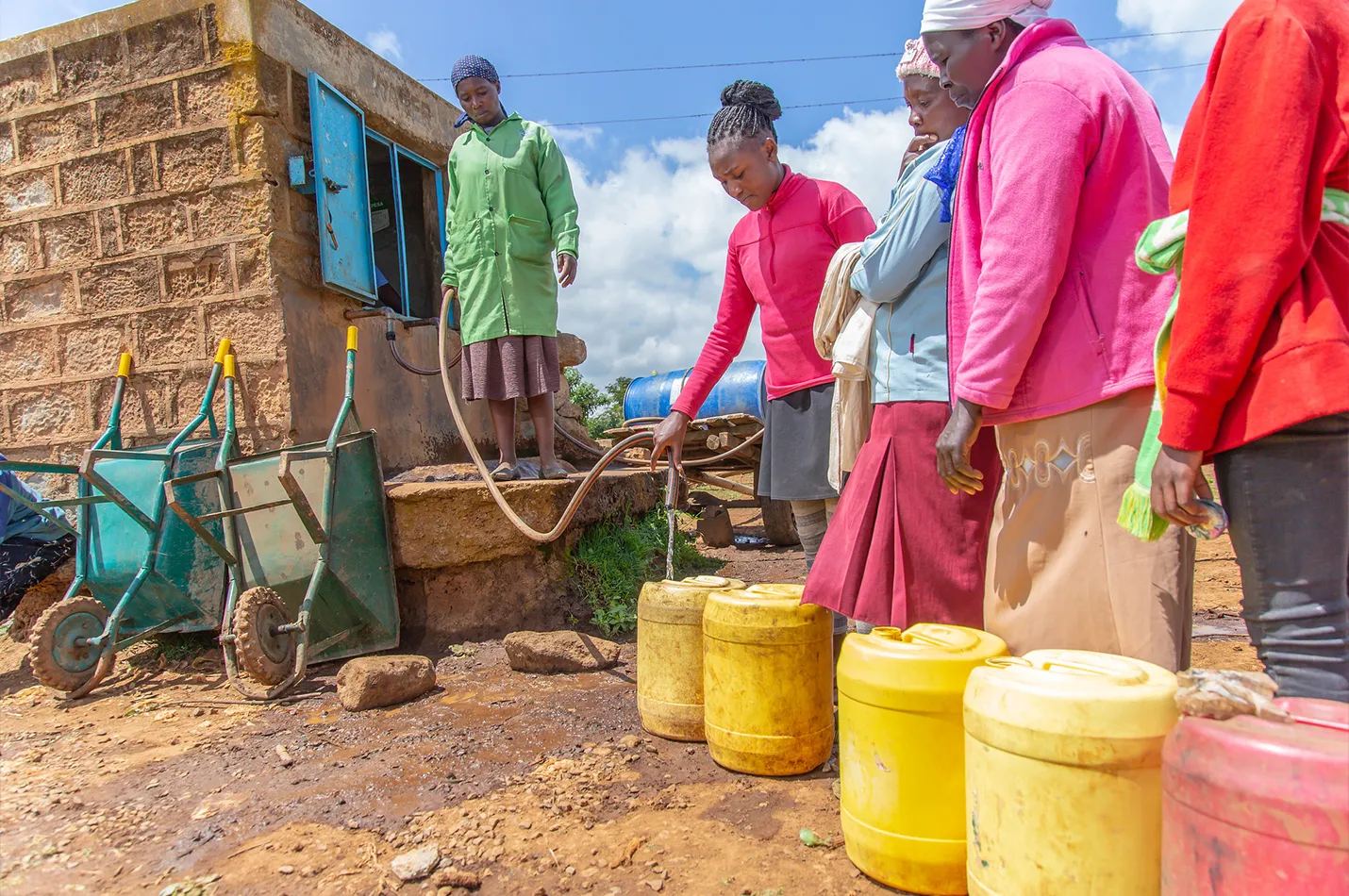How many people are affected by the global water crisis?
By Heather Arney, Global Director, Insights
Published February 22, 2024
Water is essential to life, yet millions of people around the world lack access to it. Without safe water at home, women and girls living in poverty spend hours each day collecting it, and more than one million people die each year due to health impacts alone.
This is the global water crisis. In my role at Water.org, I work each day to ensure we capture and use accurate data to measure the impact of our programs alongside the needs of the world.
At Water.org, we closely track the global water crisis. While there are many statistics that demonstrate the severity of the global water crisis, Water.org identifies the collective number of people impacted in two ways:

What is the difference between the numbers?
Both are accurate statistics and both address people living in the water crisis right now. The difference between the two stats is in the quality and proximity of the water individuals may obtain. Data we use about the scale of the water crisis and the progress that has been made comes from a third-party source called the Joint Monitoring Programme (JMP), a program implemented by the World Health Organization and UNICEF to provide regular reporting on the progress of global water supply, sanitation, and hygiene. This is widely viewed by our peers as the leading data source for the water and sanitation sector.
One of the stats we use is that 2.2 billion people in the world lack access to safe water. A safely managed water service is defined as an improved water source that is accessible on premises, available when needed, and free of contamination.
The other stat we share states that 703 million people lack access to what is considered basic water in the form of a nearby, improved source of water not more than 30 minutes away.
The following Drinking Water Ladder from the JMP demonstrates the varying service levels of water access. When we talk about having “access to safe water”, we’re talking about the top rung on the ladder: you’re able to get safe water that is available directly on the premises, free from contamination, whenever you need it. This means the 2.2 billion people who still lack access to safe water are on the bottom four rungs.

The JMP subdivides the population using improved sources of water into three groups according to the level of service provided – limited, basic and safely managed. The JMP also differentiates populations using unimproved sources such as unprotected wells or springs, and populations drinking surface water collected directly from a river, dam, lake, stream, or irrigation canal.
Moving families up the ladder toward safe water for all
The numbers are getting higher. Why is that? For many years, Water.org used basic water access numbers as a baseline goal. Along with our peers in the water and sanitation sector, we’re re-focusing on the goal of Sustainable Development 6 – safely managed water and sanitation for all. So, the numbers we primarily share now will represent the people living without access to safe, or safely managed, water. They look bigger because we are choosing to raise to the highest standard. We are narrowing our criteria. Our impact is scaling and at the same time, we’re changing the way we look at the broader goal. We’re setting the bar even higher because we believe everyone, everywhere should have access to safe water, at the highest level of the ladder.
The reality is that our work helps move people up the ladder at all levels. There is not a one-size-fits-all solution for every family in need. This is evident when looking at the levels of water service defined by the JMP, as people get the water they need to survive from various sources with varying degrees of quality. This is why we created WaterCredit. WaterCredit makes small, affordable loans available to people living in poverty so they can fund the best solution for their situation.
To date, we’ve changed more than 66 million lives with safe water or sanitation. Yet, the numbers remind us that there is more work to be done. We want everyone, everywhere, to make it to the top rung of the ladder. Thank you for helping us set the bar higher and working to help achieve our vision of safe water for all.

Access to safe water saves lives
The message remains – as you are reading this, 2.2 billion people still need access to safe water. They need it close, not far away. And they need it today, tomorrow, and for years to come. They need someone like you to help them make their family’s safe water solution possible. We believe the global water crisis is solvable.
We’ve helped more than 66 million people climb the ladder towards safe water or sanitation. With your support, we can empower millions more people with lasting access to the solutions they need to survive and thrive. Together we will create health, hope, and a bright future for all.
